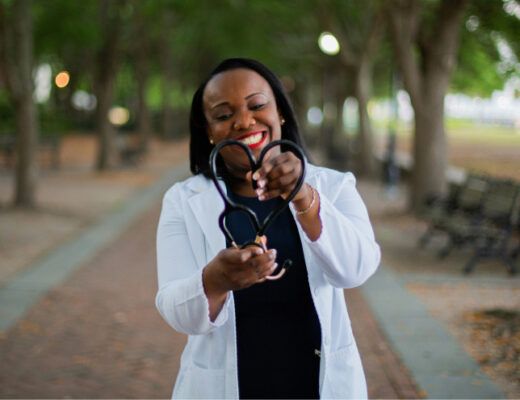By Addie Tsai
The conversation around gender and sexuality has considerably shifted since the 1970s, when queer Cuban playwright Maria Irene Fornes wrote her avant-garde feminist play Fefu and Her Friends, set in 1930s New England. America would see the legalization of marriage equality just three years before Fornes’s passing, and Merriam-Webster would name the gender-neutral pronoun “they” as the word of the year in 2019. The #metoo movement would bring about a national conversation regarding consent, sexual assault, and toxic masculinity. Even the term “toxic masculinity” isn’t one we would have conceived of in the latter half of the 20th century. Perhaps, to that point, this is why so few avid theater goers are even familiar with Fornes’ work, especially in comparison with her contemporaries, household names like Horton Foote, Edward Albee, and Sam Shepard. But even yet, the ever-expanding conversation around gender, sexuality, and equity, still has a long way to go. Case in point, no women directors were honored with a nomination at this year’s Academy Awards, and every day it seems women are faced with more challenges to holding onto their reproductive rights in a sea of cis-male politicians.
Many reviewers, critics, and scholars of Fornes’s work will call attention to aspects of an earlier envisioning of Fefu that Houston’s Catastrophic Theater does not rely upon. In the Catastrophic revival, which runs from February 14 to March 8, 2020, viewers are not split into groups using colored wrist bands and moved accordingly through different scenes and settings in a different order. This stylistic choice seems to predict the rise of immersive theater, which has now become second hat with productions like Punchdrunk’s Sleep No More.
The production intends to make attendees aware of just how ahead of her time Fornes was by the very notion of a play centering an all-female cast. For, as revelatory as it seems in 2020, one can only imagine how remarkable it was in 1978 when she first authored the play. Not only that, but I enjoy imagining how audiences of that time responded to the queering of an intimate play like Fefu in which men are not the focal point (and these eight women are just fine with that, thank you). Men are only called to off-stage and, at times, are only involved in a game with a shotgun that reminds one of Russian roulette. What’s the opposite of a Bechdel test? Oh, that’s right. We don’t have an equivalent because women have never been able to dominate the world in a way that would call for one.

Photo by Anthony Rathbun.
In between feminine textures such as a water fight, costume changes for a charity event, and a charming conversation about whether or not it is indeed charming to be revulsed, queer viewers will be most intrigued by the way in which the characters connect to one another—those who are decidedly only friends, and those who were once more than friends, and are still navigating their romantic feelings for one another. In this world created by a queer woman, we see a distinct difference between how women interact at a time when women’s bonding was thought of as strictly platonic. It is this aspect of the play that I find myself most taken with, and the delicate touches I most admire. “I think one of the great things about the play is that there is joy in seeing women be themselves,” says Julia Traber, the director of the Catastrophic production. “These women are living in 1935, so they have to operate within the social constraints of the time…but they are essentially outside of the status quo for the time period (intellectuals, educators, artists, lesbians). In Fefu’s home, these women are not having to perform roles that society requires of them. They get to just be. I think there is still pressure and confinement/judgement…call it what you will, that exists today. We still are striving to create a community because there are plenty in our society who don’t make us (women or the marginalized) feel welcome. There’s still, in 2020, such an obsession with women’s bodies, how we carry ourselves, what we can say…so, to experience and witness a place where people just get to be who they are, they don’t have to perform any assigned role, is exciting.”
Although there is much to admire in Fornes’s play that these eight women embody, and certainly ahead of its time in 1977, there are aspects that some viewers might find fail to translate in a 21st century context, particularly regarding the representation of disability and mental illness. In 2020, we see a conversation that provides a more three-dimensional view of disability and mental illness, in which there not only lives a spectrum regarding neurodiversity and physical dis/ability, but also a world in which, not unlike earlier representations of queer tragedy in films depicting queer lives, those who live with mental illness and disability are not solely portrayed as tragic and wounded (in multiple senses of the word). But Fornes’s depiction of these lived experiences only reminds us of how important it is to continue the conversation regarding the representation of mental health and disability through all mediums.
Although Fornes sets the play in the 1930s, Jason Nodler, executive director of Catastrophic Theatre, considers the play to go beyond temporal lines. “It’s not so much about capturing a period piece as it is about going back to a pre-Freudian way of talking and relating to one another, as Fornes has said herself about Fefu,” he says. “The characters are not trying to suss out how honest the other person is being. What they say is what they mean. There’s really a wonder in that. It works on you in various, subtle ways.”
Fefu and Her Friends runs now through March 8, 2020, at the Catastrophic Theatre at MATCH. For more information and to purchase tickets, click here.







